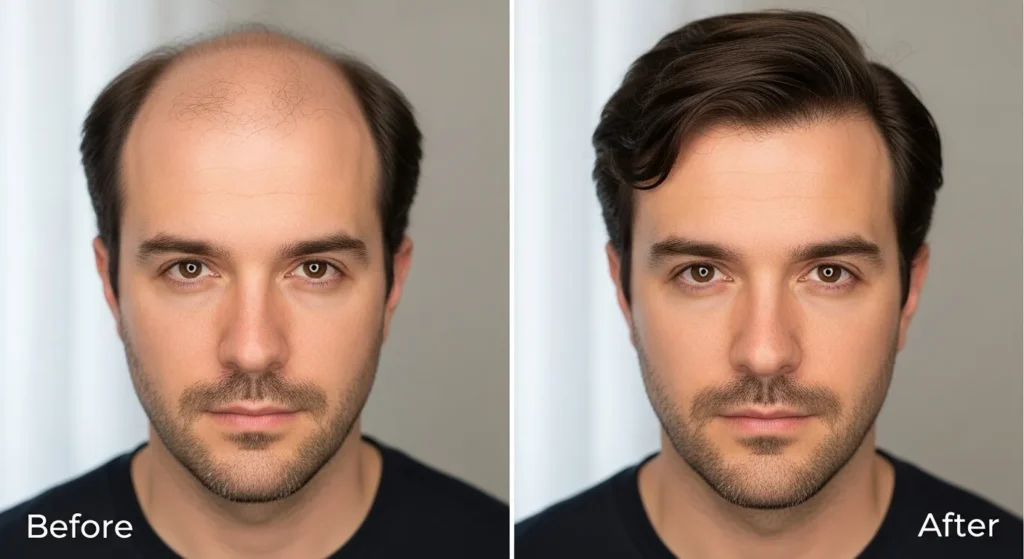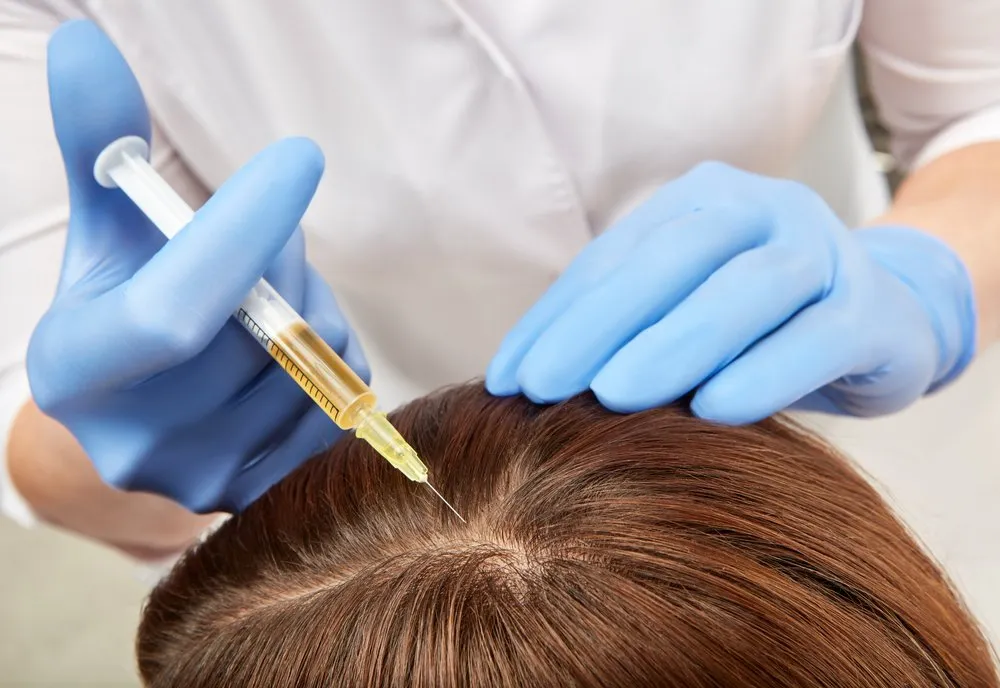Summary
After hair transplant surgery, patients often ask how can patients track the progress of hair regrowth after surgery. Progress can be monitored through regular photos, digital tools, trichoscopy, and self-assessment journals.
Tracking helps manage expectations, detect issues early, and celebrate small improvements. With patience and consistent methods, most patients see visible growth between 3–6 months and fuller results by 12 months.

Introduction
Many people wonder how can patients track the progress of hair regrowth after surgery, especially when new growth feels slow or uneven.
This guide explains reliable ways to monitor your recovery from photos and apps to medical imaging so you can measure results, set realistic expectations, and know when to check in with your surgeon.
By following these methods, you’ll gain peace of mind, avoid unnecessary worry, and celebrate visible progress along the way.
Why Tracking Hair Regrowth Matters
Align expectations and avoid anxiety
Hair regrowth after surgery doesn’t happen overnight. Tracking helps you see small changes you might otherwise miss, reducing stress and keeping your expectations realistic.
Objective evidence for your surgeon
When you return for follow-ups, having clear records gives your surgeon accurate insight into how your transplant is progressing.
Early detection of issues
Consistent tracking can help spot complications such as poor density or delayed growth, allowing early intervention.
Motivation and reassurance
Seeing progress, however small, provides encouragement to stick with aftercare and remain patient.
Hair Regrowth After Surgery: The Typical Timeline
Phases of recovery
- Immediate healing (0–2 weeks): redness, scabs, and tenderness are normal.
- Shedding (weeks 2–6): transplanted hairs often fall out in a stage known as shock loss.
- Dormancy (1–3 months): follicles rest beneath the skin.
- Early regrowth (3–6 months): thin, fine hairs begin to appear.
- Maturation (6–12+ months): hair thickens, darkens, and blends with natural growth.
Month-by-month expectations
- 0–1 month: healing only, no lasting hair.
- 3–4 months: first sprouts.
- 6 months: visible coverage, though thin.
- 9 months: fuller density, texture improving.
- 12–18 months: final results in most patients.
Variability
Age, hair type, overall health, and surgical technique all affect how quickly visible regrowth occurs.
Patient-Accessible Tracking Methods (How to Track Regrowth)
Standardized photography protocol
- Lighting: Use the same bright, neutral light each time.
- Angles: front, top, both sides, and crown.
- Tools: Use a smartphone tripod for consistency.
- Frequency: once every 2–4 weeks is ideal.
Scalp magnification & trichoscopy
Dermatologists use trichoscopy (scalp magnification) to count hairs and check follicle health. Affordable clip-on smartphone microscopes can give patients a simplified version at home.
Digital tools and apps
Several apps allow patients to log photos, compare them side by side, and even overlay images to spot subtle changes.
Direct measurements
Patients can select a few hairs and measure their length with a ruler. For density, counting hairs in a small marked area can show progress.
Self-assessment journals
Keeping a diary of satisfaction, confidence, and appearance helps track emotional progress alongside physical growth.
Interpreting Your Tracking Data
Signs of good progress
By 3 months, you should see tiny sprouts. At 6 months, new coverage is noticeable. By 12 months, hair is denser and natural-looking.
Normal vs concerning stagnation
Periods of little change are common, especially between 4–5 months. However, if there is no visible progress at all by month 6, consult your surgeon.
Understanding cycles
Hair grows in cycles: anagen (growth), catagen (rest), telogen (shedding). Tracking helps you spot these patterns rather than misinterpreting them as problems.
Dealing with patchiness
Uneven density is normal early on. Consistency usually improves with time.
Factors That Affect Trackable Progress
Patient factors
Age, genetics, nutrition, and scalp health influence regrowth speed.
Surgical variables
The number of grafts, survival rate, and placement technique are critical.
Post-op care
Following aftercare, such as gentle washing and avoiding trauma, directly affects results.
Adjunct therapies
Finasteride, minoxidil, PRP, or microneedling can enhance visible density.

Risk behaviors
Smoking, scratching, and harsh styling can slow recovery.
Expert Tips & Pitfalls to Avoid
Common mistakes
- Inconsistent lighting makes progress hard to judge.
- Taking photos too frequently creates anxiety over slow change.
- Comparing yourself to others instead of your own baseline.
FAQ — Tracking Hair Regrowth After Surgery
How often should I take photos?
Every 2–4 weeks is ideal. Weekly photos may cause unnecessary stress.
Can I use a smartphone camera?
Yes, just ensure consistent lighting and angles for accuracy.
How do I align angles each time?
Use a tripod, mirror, or mark a spot on the floor to keep distance and framing consistent.
Will touching my scalp during tracking affect regrowth?
No, a gentle touch won’t harm follicles. Avoid scratching or harsh rubbing.
What if I don’t see growth at 6 months?
Mild delays are normal, but consult your surgeon for evaluation.
Is regrowth always symmetrical?
Not always. Some areas mature earlier than others.
Next Steps
Tracking your hair regrowth is the best way to stay confident and informed after surgery. If you feel progress is slow or want expert evaluation, book a consultation with Dr. Rana Irfan, an ABHRS and ISHRS certified in Islamabad. Our specialists can review your tracking log, recommend supportive treatments, and ensure your journey leads to lasting, natural results.
Tracking regrowth helps you stay realistic, motivated, and proactive. With simple tools, photos, apps, and expert follow-ups, you’ll gain a clear picture of your progress. Remember, hair restoration is a marathon, not a sprint, and consistent monitoring is your best ally.
